CONTACT
A Chapter from “The Simplicity of Dressage”
By Johann Hinnemann and Coby van Baalen
Many riders spend their entire lives wrestling with their horse’s contact. The horse is too heavy in the hand or too light; his head isn’t quiet; he’s stiff and against the hand; he tilts his head. Plenty of different problems! This is not the case, according to Coby van Baalen and Johann Hinnemann, when you see it as one of the six basic concepts of a jumping or dressage horse’s training. Good contact always interplays with the concepts already mentioned – rhythm and losgelassenheit – as well as impulsion, straightness and collection. All of these together result in a horse that is nice to ride. The rider’s aids go through optimally. This chapter discusses why good contact does not have to be a life-long struggle.
 Balance and contact are easy for the stallion Ehrentanz. Ridden by Coby van Baalen, Münster 1999.
Balance and contact are easy for the stallion Ehrentanz. Ridden by Coby van Baalen, Münster 1999.
Most people are accustomed to thinking of the concept of contact as the sensitive and light, elastic connection with the horse’s mouth that the horse offers in response to the rider’s request. This is a somewhat limited view, according to van Baalen and Hinnemann. “I feel that contact with the horse is actually affected by three points,” says van Baalen. “I believe that the first contact point is your leg. Your leg should be in constant contact with the horse, and the horse needs to understand what it is saying. Even the horse’s basic understanding of that is already a type of contact. The second point is your seat, which includes your seat, knee and hip. You use your seat to give aids to your horse, which your horse answers by responding with movement. You can call that response ‘contact’. Finally, you have rein contact, which arises from the connection between the mouth and the rider’s hand. That is the third contact point.”
Hinnemann adds, “I really want to emphasize that a rider first rides a horse with the legs and seat; then come the rein aids, as a support to the seat and legs. These three things together subsequently determine the quality contact that leads to the complete harmony and understanding between the horse and rider.”
According to Hinnemann and van Baalen, contact originates from three areas of contact with the horse: the legs, seat, and hands. The three-point contact is clearly evident in the photo. Horse and rider are in balance. Ferro demonstrates a “live” contact.
Connection and Contact
Van Baalen and Hinnemann clearly want to emphasize their shared view that a good contact with the mouth can only occur if the rider also has good contact with the seat and legs. The rider maintains contact with the driving aids and strives for a rhythmic and relaxed, forward-moving horse. The horse takes the bit and draws, so the speak, on the rider’s hand. In this way, contact is created.
“Indeed,” Hinnemann says, “people also say that the horse seeks the contact and the rider enables the horse to find it.”
“In other words,” van Baalen adds, “the rider asks with the connection, and the horse answers with the contact.”
A good contact provides the horse with the security he needs to regain his natural balance in all three gaits. When the horse is ridden with his neck stretched long and low, the neck is extended like an accordion, and the horse should absolutely not be pulled together. “The end result should always be an elastic contact,” van Baalen says, “in which the poll is the highest point and the ears are level. This applies to the lateral movements as well.”

The ideal contact requires constant connection with the rider’s hand. This applies even in the free walk, as Marlies demonstrates here on the stallion Inspekteur.
The Logical Outcome
In van Baalen and Hinnemann’s view, a good contact is the logical outcome of riding forward and always striving for good rhythm and relaxation in the horse’s movement. The horse develops a sure and constant contact out of this contented carriage and losgelassenheit (both physical and psychological in nature, as described in the previous chapter.)
“A pleasant and light contact is subsequently the most important means of improving a horse’s impulsion,” says Hinnemann. “A rider can straighten a horse by riding him forward with impulsion. A straight horse can finally achieve a degree of collection under his rider. In that way, the circle becomes complete: rhythm, losgelassenheit, contact, impulsion, straightness, and collection – they all work together. Finally, these qualities ensure that the horse is totally receptive to all the aids; we call that durchlässig, completely on the aids.”
Of course, the rider’s hand must always be present to achieve the ideal contact. Says Hinnemann, “A horse will come behind the bit if he has too little connection with the rider’s hand. Furthermore, the horse won’t come on the bit anymore if he’s allowed to take the bit in such a way that he can also readily back off it.”
Coming Away from the Bit
“Coming away from the bit?” When you read the German expression for the first time, ‘Abstoszen vom gebisz’, you may be inclined to think that this ‘coming away’ is a major fault. However, coming away from the bit is decidedly not the same as not taking the bit at all. Hinnemann views coming away as a sign that the horse completely accepts the bit. The horse allows the impulsion of his hindquarters to flow over his back and through his neck to a closed but ‘living’ mouth. He trusts the bit completely. At the same time, the horse lightly and almost imperceptibly comes away from the bit. The rider notices the contact become even nicer and lighter and the driving and restraining aids are optimally communicated. The horse doesn’t display any resistance in his body. The horse accepts the bit as part of his body, so to speak. Thus, coming away from the bit is actually the optimum contact a rider can have with the horse’s mouth.
Ultimately, this state of perfect contact will help the horse and rider team in the future when both are further advanced in their training, not as an irrevocable thing that doesn’t require further thought, but as something in which higher degrees of perfection can continually be achieved.
“I could almost write a separate book about the idea degree of contact in coming off the bit,” says Hinnemann. “It’s an on-going development process that is not visible to the eye but is definitely felt by the rider.”
Not with the Hands
The rider should never force contact with the hands. “Everyone has pulled on the reins to get a horse’s head and neck in the right position,” van Baalen says, “but to no avail. It’s always detrimental to the horse’s schooling. It may look nice – such a proud, round neck – and the horse may even come up a bit. However, if the shape of the neck is not the outcome of the driving aids and a good contact with the seat and legs, then it’s meaningless, because the hindquarters aren’t active and the back isn’t swinging, allowing the movement to flow through the body. Using the hands from front to back always immediately causes the hind legs to step under the horse less actively. This should be a red flag to every rider. The hind legs not stepping through should never happen, because the goal of dressage is to improve the gaits! Contact and a particular neck shape should always be the outcome of the driving aids, a horse that moves in the correct rhythm, that shows contentment, and that moves with a supple body.”
A correctly ridden horse seeks the contact himself. He approaches the bit with confidence.
Conformational Shortcomings
Of course, achieving a good contact is not always easy. A rider’s hands can often feel a horse’s every problem. “I always say that with riding,” van Baalan states, “and definitely with the contact, you actually fight against conformation flaws. Horses with flawed necks, for instance – too long or too high set – also have difficulty bending. In those cases, achieving a good contact will be far more difficult than with a horse that has a well-formed neck. This applies to horses with difficult mouths, too. If the hindquarters are weak, the horse will have difficulty with self- carriage behind, and that is also usually a contact problem with the rider’s hand. If the horse’s conformation contributes to an unsteady or difficult contact, and that’s the case ninety percent of the time, then the rider needs a lot of extra patience to improve the conformation by making the horse stronger and properly muscled. It takes quite a bit of time to develop – to make usable, in any case – a part of the horse that nature didn’t gift athletically.”
In general, we can say that strong, heavily-built horses usually take a heavier contact than light, hot-blooded types. This is just a function of the horse’s type.
The stallion Zonneglans (Le Mexico out of a Rhodos by L’Espoir x Erasmus), as a six-year-old in 1987. In 1986, Zonneglans was rejected as a breeding stallion for his line. “He had nice movement, but he would get nervous at shows and that would sometimes cause problems with the contact,” explains van Baalen.
The Right Bit
Another reason for contact problems can be an improperly fitted bit or a bridoon and curb that don’t lie comfortably in the horse’s mouth. Most riders know the general guidelines: A bit fits properly and is adjusted to the proper height if it is approximately two-tenths on an inch (1/2 cm) wider than the mouth and if the corners of the mouth are not pulled up too high. However, a bit adjusted too low is not good either, as it will often bump against the eye-teeth. The thinner the bit, the sharper the effect. A double-jointed snaffle allows the tongue a little more room than a single jointed snaffle.
“I must honestly say I’ve noticed there’s still little attention given to properly fitting bits,” says Hinnemann. “Even at the higher levels, I often see horses in double bridles with much too long a shank, with the curb so wide that it’s pulled through the horse’s mouth, and with a twisted chain. Seeking advice on the correct use of the double bridle is not shameful; on the contrary, it’s a smart idea.”
Previously, almost everyone rode with a single-jointed, fat eggbutt snaffle; nowadays, the thinner, loose-ring snaffle can be seen everywhere. “You shouldn’t worry about fashions and practices,” urges van Baalen, “rather, experiment a little with bits to see which your horse goes in best. Some horses like thick bits, others like thin bits. Notice your horse’s temperament as you train him and take that into consideration.”
Temperament
Van Baalen believes that contact is sometimes a matter of temperament and personality. One horse is more nervous than another, and that can also have repercussions on contact at times you do not expect it, like at a show.
Van Baalen has always ridden a lot of stallions. The stallion, Zonneglans (Le Mexico x L’Espoir) bred by J. Bekkers, in St. Odenrode, could surprise his rider with respect to contact. “Zonneglans could suddenly get very nervous,” explains van Baalen, “and then all at once drop the bit. He would then start rattling the bit and pull his tongue up. Sometimes he would even get his tongue over the bridoon and curb. Then I would have to exit the arena, because I no longer had any control. This was in the mid to late 1980’s and at that time, I still didn’t have enough experience to solve that problem. Now if I am riding a stallion that suddenly does a similar thing, I know I have to give the reins forward so that the horse has the freedom to get his tongue back under the bits. It also helps to set the bit a little higher in the mouth. That’s how you solve a temporary problem with the contact.”
A rider striving for optimum contact must consider his horse’s conformation as well as his temperament. However, if a rider always goes back to the basics of rhythm and relaxation and making contact with the leg, seat and hand, he will sooner or later receive the answer form the horse that he’s been waiting for: Contact!
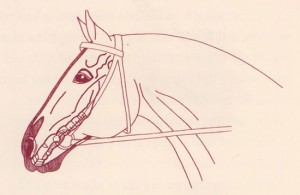
The bit rests on the toothless areas of the mouth: the bars
Learn to ride
I intentionally say ‘learn to ride’ because there’s a second misunderstanding commonly associated with the double bridle. Learning to ride with the double bridle is grossly underestimated by most riders. It is far more difficult than most people think! The rider needs to have more sensitivity. Don’t underestimate the action of the curb. The shank of the bit, or the lever arm, where the rein is attached directly affects the top of the horse’s neck, just behind the ears. The leverage action of the curb means that a small aid given by the rider is felt much more intensely by the horse. It’s for good reason that some people use a ‘baby curb’ when learning to ride with the double bridle. The baby curb has a shank four-tenths of an inch to one inch (1 – 3 cm) which has less leverage effect than a longer shank. It’s a compromise for both horse and rider and perhaps it’s a useful transition bit.
The parts of a curb bit.
1. Mouthpiece
2. Port
3. Upper cheek
4. Shank
5. Bit ring
6. Space for a lip strap
7. Curb chain hook
The bridoon and curb chain
The loose-ring bridoon of a double bridle is usually thinner than a normal loose-ring snaffle. In general, Coby van Baalen has had the best experiences with the double-jointed, loose-ring snaffle.
The Right Double Bridle
In general, an average bridoon and curb bit of normal thickness, are the best. Other types of curbs bits have their advantages, but at the same time, have disadvantages. A curb with a high port, for example, seems horse-friendly. A high port allows plenty of room for the tongue, right?
The parts of a double bridle
1. Cavesson noseband
2. Curb cheekpiece
3. Bridoon cheekpiece
4. Bridoon rein
5. Curb rein
6. Bridoon bit
7. Curb bit
8. Curb chain
However, you have to consider that the horse gains tongue room at the expense of room elsewhere, such as the bars. This curb acts more severely on the bars than the average curb, precisely because the tongue is entirely free. A normal port spreads the pressure over the tongue and bars. ‘Normal’ is therefore always best, with an average port and shanks of reasonable length. The rules state that the shanks may not exceed four inches (10 cm), but this is very long, and requires a rider with very sensitive hands. Instead, choose a shank about half that length. The diameter of the bridoon ring may be as large as three inches (8 cm). I also think this is very large. This certainly does not make for a pretty picture on a horse with a small mouth. The bridoon and curb should visually look good in the horse’s mouth; then it usually also feels good.
Consult your federation’s regulations to learn what bits and bridles are permitted for dressage competition. A cavesson noseband is required with the double bridle; flash nosebands are not allowed.
Furthermore, the double bridle requires a curb chain. I’ve never had a new girl at the barn who immediately could put on a double bridle without making a mistake. In 99 out of 100 cases, the curb chain is twisted. The same is true at shows, so always pay close attention. The chain hooks that are attached to the curb are different on the left and on the right sides, so also pay close attention when replacing one of the hooks. The curb chain, which lies against the chin groove at the same height as the curb, is essential for the curb to work. See the illustrations. The curb chain may be covered with a piece of leather or rubber for sensitive horses.
For my own feel, the double-link bridoon has proven itself over time. The double-link bridoon provides the advantage of tongue freedom, as discussed earlier. In addition, you should check that both bits are made of the same material, as stipulated in the rules. Every tack shop should also be able to tell you that. If you can, first borrow a double bridle from someone, perhaps your instructor, and then buy one once you know what fits your horse.
Adjusting
You should take a step back in your horse’s schooling while he’s adjusting to the double bridle. Do only exercises that are well confirmed and give your horse confidence in his new bridle. Do a lot of rising trot, stretching circles, figure eights, and serpentines so that you can learn how to gather up the reins smoothly and always take the correct length on the new outside rein and take the new inside rein a bit shorter through the turns and in the other direction. The curb rein should hang with a light loop through all this work as you maintain contact on the bridoon rein. Don’t forget, as you can easily use too much curb rein. Some riders find it helpful to use two different reins made from different materials: for example, a fabric jumping rein for the bridoon rein and a thinner, leather rein for the curb.
Correct: When the rider takes up the snaffle and curb reins, the angle of the curb shank should form approximately a forty-five degree angle with the mouth.
a) Incorrect: The curb angle is too great. The curb chain is attached too loosely; as a result, the curb acts too strongly on the corners of the mouth and too little on the bars and poll, where it is intended to act.
b) Incorrect: The curb chain is attached too tightly, allowing the curb to act too severely.
Don’t use the double bridle more than two or three times a week when the horse is first learning to get used to it. Some horses are very hot and react to the double bridle with little confidence. With such horses, you may even consider warming up half an hour with the snaffle rein only before taking up both the reins. If your horse is very obedient and enjoyable on the trail, then in this learning stage, ride him easily in the double bridle when you go on the trail. Stay off the reins. This will help your horse gain confidence in his new bits, and it will help him seek the contact again later.
Darwin in a correctly fitted bridle
Confirming
After the initial learning stage, you will naturally build up your work with the double bridle until you are again at the level you were previously, asking for some collection and compression in the transitions, and other such things. However, continue to use the curb rein carefully. It’s difficult to say, without seeing you and your horse, if you should, after an adjustment period of several weeks, continue to alternate between the double bridle and the snaffle. I prefer to train all my horses in a snaffle all the time, with very few exceptions. In contrast to the lower levels, the double bridle is mandatory at the FEI levels. I also feel I need to stay in practice riding with the double bridle to attain and continue to confirm that very nice contact required at the upper levels. Given the rather busy show and exhibition schedule at my barn, I usually ride my upper level horses in the double bridle. Everything takes time and practice, but practice makes perfect. I wish you success in this new stage of your riding development!
This extract has been reproduced with the permission of the publisher.
This article first appeared in the March 2004 issue of THM.



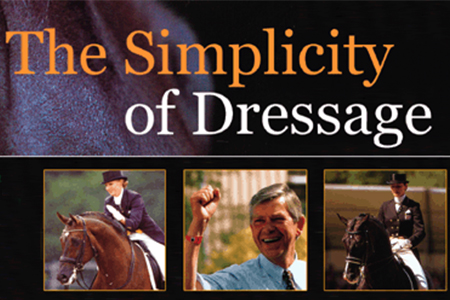
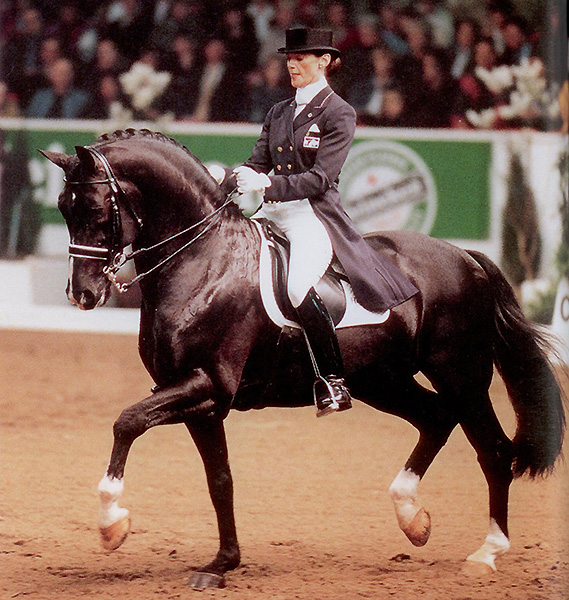
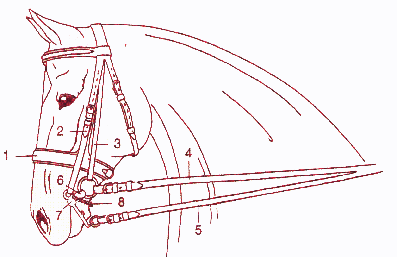
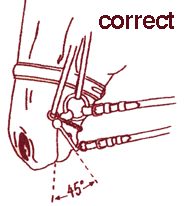
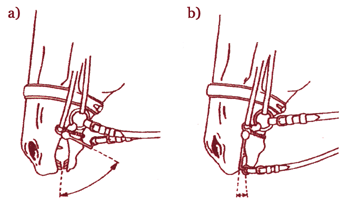
Excellent and we’ll rounded article on a vastly misunderstood subject. Thanks